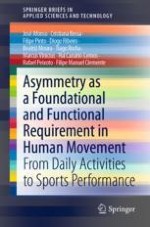This book describes the structural and functional asymmetries in human body movement by providing cases and examples using illustrations and easy-to-understand scenarios. Specifically, it adopts an evidence-based approach to demonstrate (i) the role of structural (e.g., bone dimensions) and functional (e.g., hemispheric dominance) asymmetries in the human body; (ii) the asymmetric nature of most daily activities (e.g., gait, mastication); (iii) the benefits of asymmetry for physical performance; and (iv) the role of asymmetry in preventing injury. More than just a scientific book, it bridges the gap between theory and practice, and includes practical examples and applications. The book appeals to academics and practitioners in the fields of kinesiology, human movement, sports sciences, strength and conditioning, and physiotherapy.
